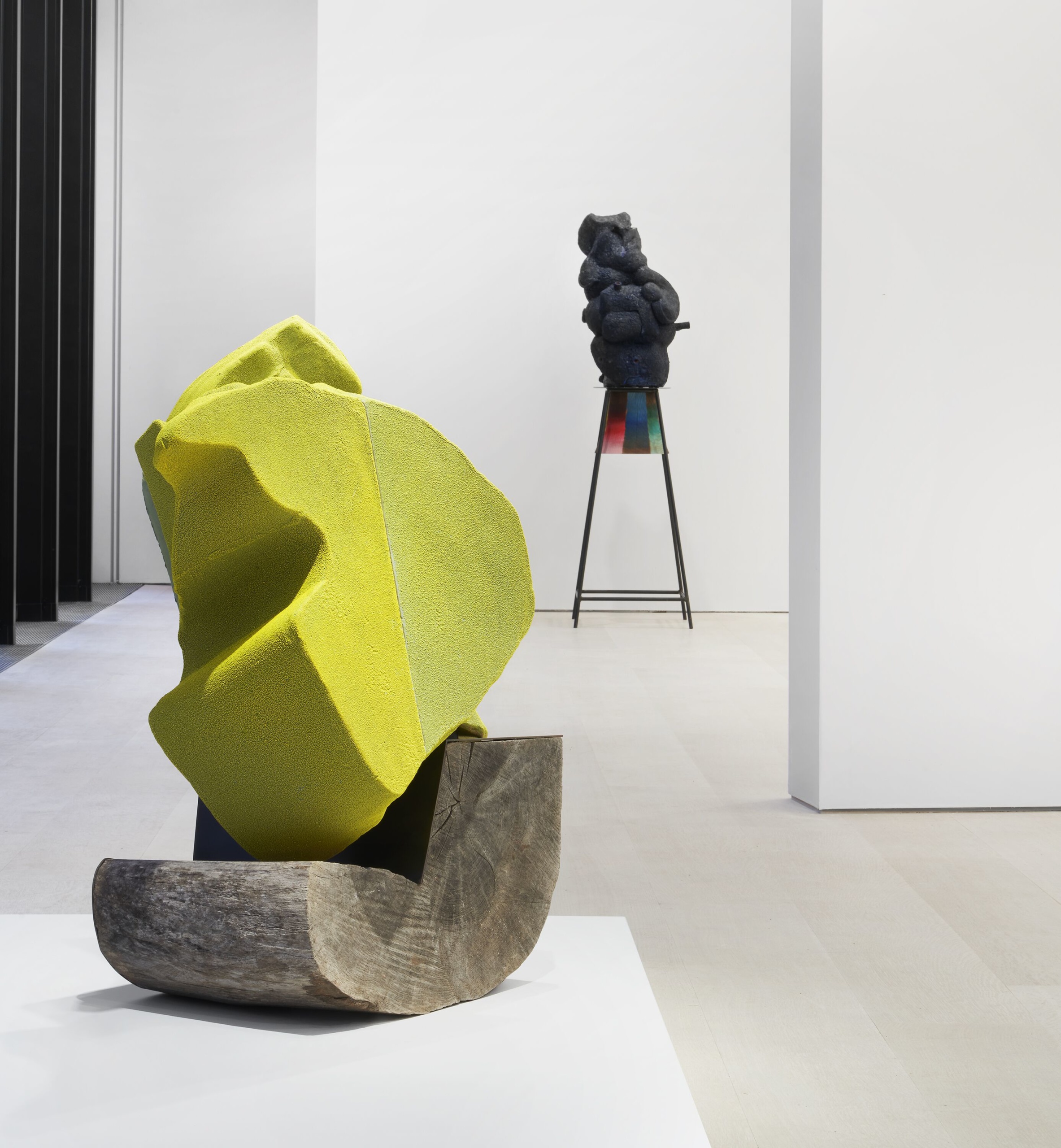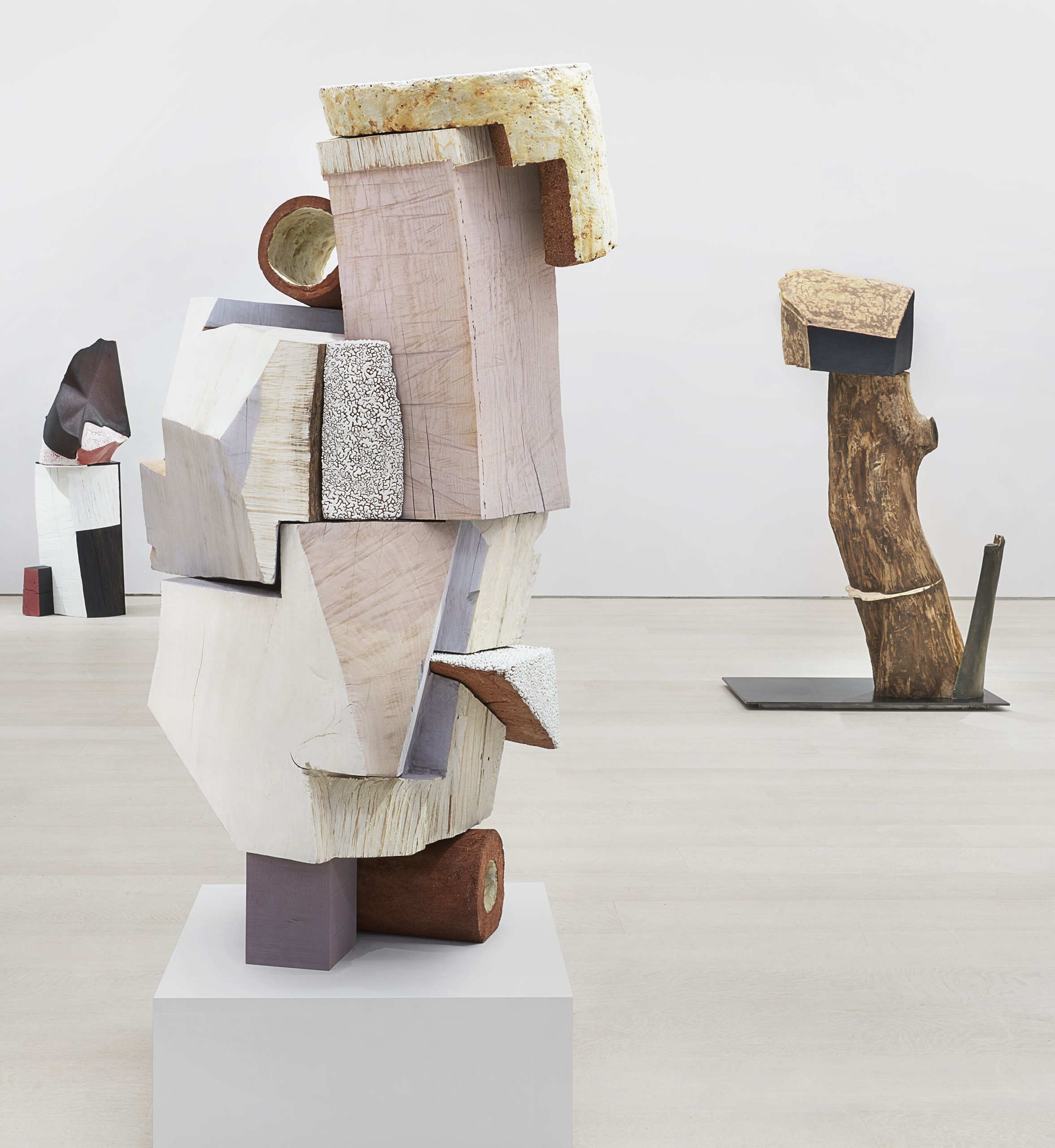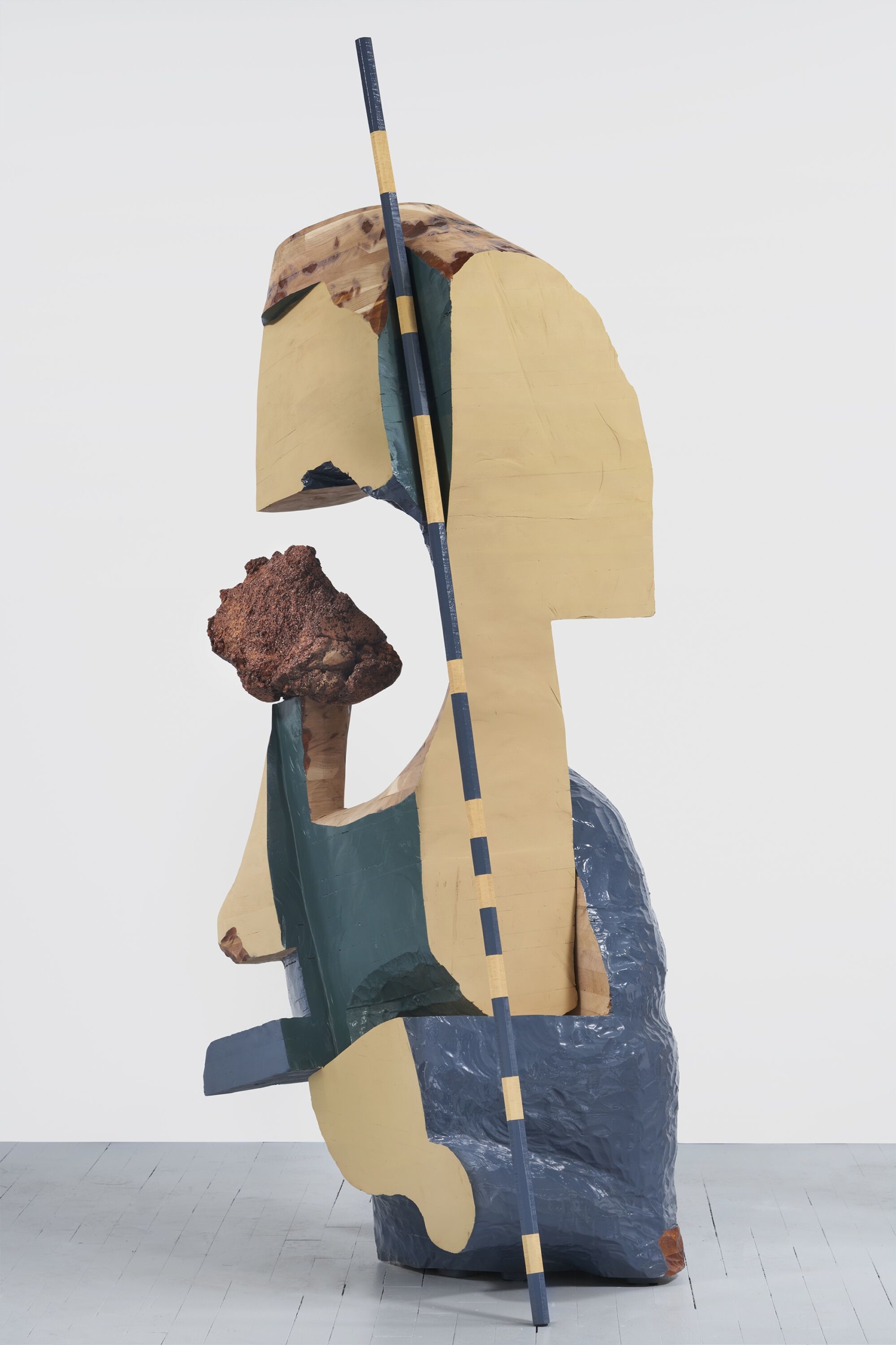
Arlene’s Shechet’s sculptures look like they may very well topple over. But her signature illusion of chaos belies the painstaking thought involved with each creative step. Deep Dive (2020) is perhaps my favorite of the 18 sculptures in Shechet’s debut Pace exhibition “Skirts.” The piece, an abstract hunk of acid-green, glazed ceramic, balances on a painted steel and walnut log that she carved years ago—long before Deep Dive, in its final form, came into being.
Another hallmark of Shechet’s 30-year practice: objects made from found materials, mingled with clay and high-gloss, that have a unique sense of impending motion. “Friends,” Shechet calls them—from some animated, netherworld. “Arlene brings sculpture right to the edge and pulls it back through humor and rigor,” says Brooke Kamin Rapaport, deputy director and chief curator of Madison Square Park Conservancy, a program that’s now synonymous with pushing the bounds of contemporary public art with large-scale weather-defying projects for New York City. For seven months, beginning in September of 2018, New Yorkers relished Shechet’s “Full Steam Ahead,” a series of porcelain, wood and cast-iron sculptures that encircled the park’s empty reflecting pool.
“Arlene had the audacity to push ceramic sculpture out the door,” Rapaport explains. “And it will no doubt inspire other artists and propel their work into publicness.” While the physical iteration of “Skirts” is currently closed, visitors are encouraged to explore the exhibition via Pace Gallery’s online viewing room through April.
Below, an abridged conversation from my recent interview with Schechet. We met in her Tribeca studio, on a frigid February afternoon, one month before her show opened to the public.

How much trial and error went into the final Skirts exhibition we see? First of all, I don’t think that you’re really working on making art if you’re making things that you know about already. It has to be that you’re always discovering something. You can’t have a life as an artist and know what you’re going to do. That’s the artist who makes a show with 20 of the same paintings; they’re all just different colors. The reason I’m an artist isn’t to become rich and famous. And that’s a terrible reason to become an artist. I’m an artist because of the research, because of the process. I’m interested in the investigation much more than the finished product. You have to love your time in the studio to want to dedicate your life to art. No, it’s beyond love. I need my time in the studio.
How do you describe the show? I would describe it as a continuation of my practice. I try not to think about my art as succinct bodies of work the way sometimes people refer to their show. I just work all the time. I try to let the work live. The watch stopped and I said, “Okay where am I?” I put the show together, editing from my studio, whatever has been happening for the last year.
Does art making feel different for a gallery audience versus a public one in Madison Square Park? It’s such a great experience to make outdoor art for a large population of people in New York City; to have people who aren’t looking for an art experience but stumble on to one is probably, for a lot of artists, the ideal situation. The uncontrolled nature of that project is balanced by a very controlled situation in the gallery. I thrive on both. They’re both necessary for me to think about what I’m doing. In this particular exhibition for Pace, I’m looking for control over the space and to create a choreography among the pieces. I think about every sight line. I think about every juxtaposition. Of course, until I started installing, I really don’t know. But I have dictated a few walls to be built. It’s so fresh because the space is so new.
You’re also known for turning fragility upside down, breaking with the convention of porcelain and ceramic as delicate materials. The fragility of ceramics is just a mythology that I think has to do with sound. If you put a greasy hand on a painting, it doesn’t make a noise. It’s not frightening the same way the sound of shattering ceramic can be. But inside museums, you see how many things can go wrong with paintings over time. A piece of paper or a photograph is actually much more fragile than a piece of ceramic, which survives centuries, if not millennia.
This brings me to your work in The Whitney’s “Making Knowing” show about craft. It’s such a loaded word. Well, I’ve developed a completely thick skin. Before ceramics, I used glass. I had weaving in a New York exhibit almost twenty years ago. I’m a walking craft show. It’s such a misunderstanding. What’s not crafted? Society gives craft all this meaning. I feel there is a spectrum in which we can celebrate making things with our hands, and that’s what we do as artists. I think address the issue head on: craft or art, what difference does it make? People have been arguing this forever. Honestly, one of the reasons I started using clay was because it was so marginalized and denigrated as an art material. I felt it had gigantic opportunities. If you work on the margins, it’s not crowded there. It just feels weird and wonderful like, “Oh I’m going to make this thing and I’m making it out of this material you have no respect for. Eat it. Watch. I’m going to do something good.”

You said something on an Art21 episode that’s stuck with me: Everything looks better wet—paper, paint, clay. I’m always trying to get to that sweet spot where I’m working with the thing, but I’m not overworking it. That’s the hair raising-part. When can you stop and have it still be alive? We don’t think of everything as having once been alive—but it was. And for me, a lot has to do with air and timing. Consider a balloon. If you fill one with air, you can feel how firm it is: the same with clay. It has to hold air to give it structure. Then, I let the air out at a certain point when I feel it’s hard enough. It’s very demanding.
Why do you think people use the word humor to describe your work? Well, humor can be aligned with play. That’s one of the things that possibly the work communicates, this sense that I’m playing and you’re in on it. For instance, look at the sculpture behind you, the way that hunk of orange porcelain is just embedded and possibly dripping down to the surface. Someone might find that funny because it’s such a weird juxtaposition. Though other people may have different vocabulary for it. Humor is close to life; I like that. I’ve been exposed to many Buddhist teachers and I made this observation early on—they’re always telling jokes or laughing, even the Dalai Lama. We all have this big elephant in the room, that we are all going to die. Yet we also have this ability to live with an awareness of how light things can be if we allow. Let’s have both: the pathos and the humor, both are elements that I’m trying to balance along with the physical balance you see in my work.










 in your life?
in your life?

